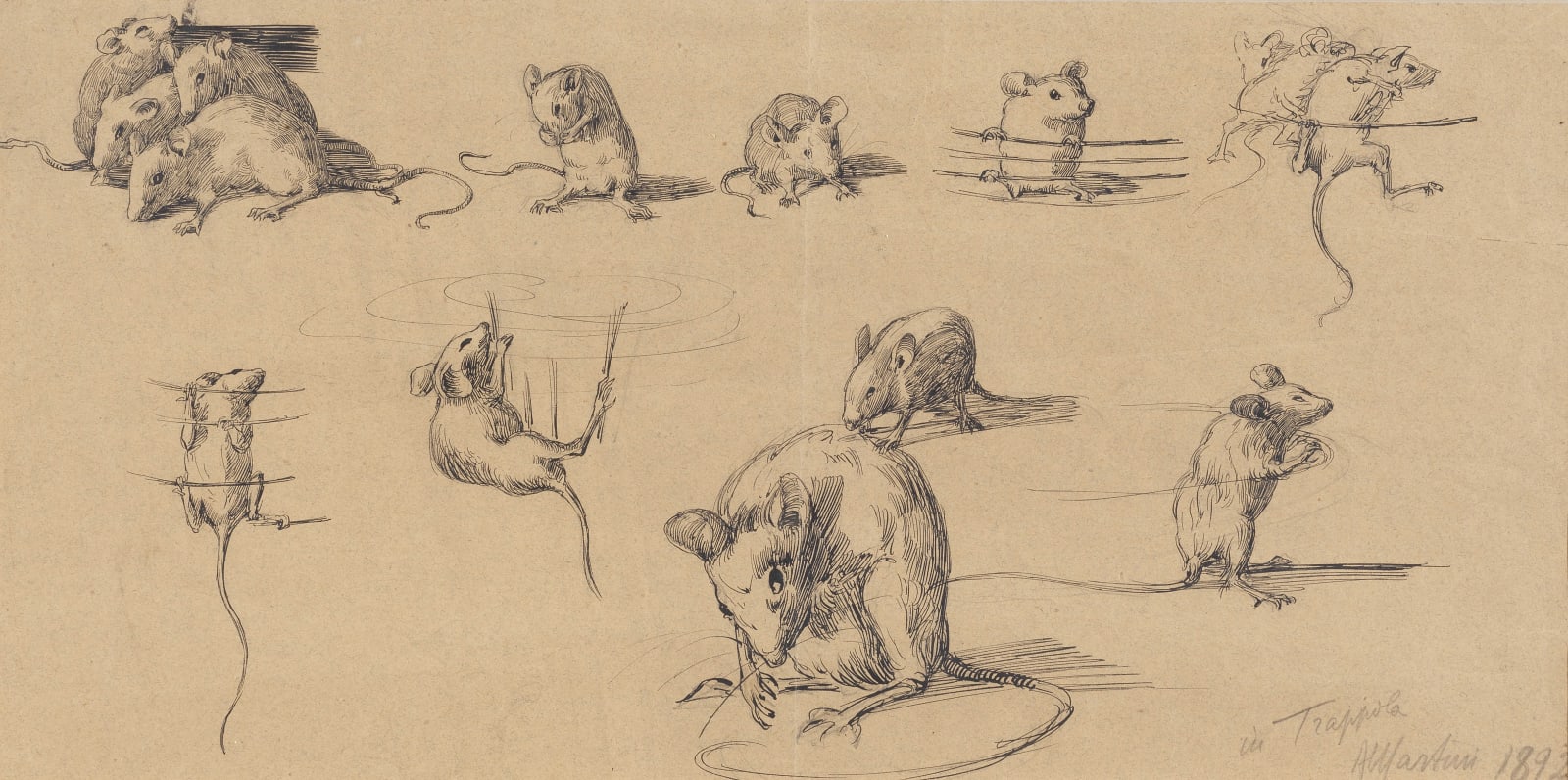Alberto MARTINI
Publications
Animalia, Galleria Paolo Antonacci Rome, May 2023, catalogue edited by P. Antonacci and L. Bocci, entry no. 19.
Alberto Giacomo Spiridione was born to Maria dei Conti Spineda de Cattaneis, an ancient noble family from Treviso, and Giorgio Martini, a naturalist painter and drawing professor.
Between 1890 and 1895, under the guidance of his father, Alberto began to paint and draw, thus continuing the family tradition. During his formative years, Martini produced countless drawings, immediately revealing a particular predilection for graphics. Between 1894 and 1896 he produced the fourteen watercolour ink drawings of the Albo della morte, revealing cultural influences of Nordic origin. In 1897 he exhibited 14 drawings for La corte dei miracoli at the II Venice Biennale. In 1899, with the drawings for Il poema del lavoro, he participated in the III Venice Biennale. In 1901 he produced the first cycle of 19 watercolour pen drawings for the illustrated edition of “La Divina Commedia” promoted by the Alinari competition in Florence. In 1904 he made a short stay in Paris.
In 1914 he was present at the XI Venice Biennale where he exhibited, together with the portraits of the Marchesa Luisa Casati and the Countess Revedin, the pastel Arlecchino. At the outbreak of the First World War, he executed 54 lithographs entitled Danza Macabra through which he revealed his anti-German sentiment. In 1916, in May, at the Leicester Gallery in London, he exhibited four series of the Danza Macabra. In 1919, in January, his personal exhibition was inaugurated at the Galleria Pesaro in Milan. Martini's interest in the theatre dates back to the years 1919-20: in fact, he produced 84 pen and watercolour drawings. In 1922 he participated in the XIII Venice Biennale. In 1924 he exhibited at the XIV Venice Biennale the pastel A Venezia, in which he portrayed Maria Petringa, his future wife, who would be a source of inspiration for Martini's numerous works.
Disappointed and embittered by the hostility of Italian critics, who towards the end of the 1920s seemed to ignore his works, Martini moved to Paris, where he found high-ranking friends and numerous admirers of his art. Martini remained in Paris until 1934, with the exception of a few brief stays in Italy.
In the period 1934-1940, due to the precarious financial situation, Martini was forced to return to Milan, where he died in 1954.
JOIN OUR MAILING LIST
Subscribe to our mailing list in order to receive news on new acquisitions, exhibitions, special previews and more!
* denotes required fields
We will process the personal data you have supplied to communicate with you in accordance with our Privacy Policy. You can unsubscribe or change your preferences at any time by clicking the link in our emails.
